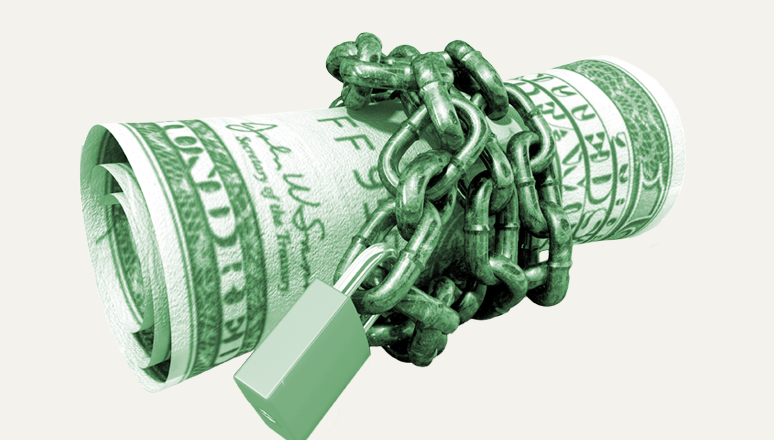
Security debt is like a slow leak in a tire—it builds up over time and, if left unchecked, can cause serious problems. At its core, security debt is the accumulation of unresolved security issues that stack up over time. These are the tasks that get pushed aside, the risks that get ignored, and the decisions made in haste that aren’t fully thought through. The longer security debt goes unnoticed, the more it grows—until one day, it explodes into an unmaneageable crisis.
How Does Security Debt Accumulate?
Security debt snowballs. Every time a security patch is postponed or a system update is deferred, you’re piling up more “debt” that’ll come due later. And just like financial debt, it’s hard to keep track of how much you owe until it’s too late. For CISOs and security teams, this accumulating debt is often invisible until a breach or an attack forces it into the spotlight.
The worst part? As teams deal with these breaches or incidents, even more routine tasks get sidelined, adding to the cycle of debt. It’s a never-ending loop of firefighting that keeps security teams from ever getting ahead.
The 4 Common Causes, According to CISOs
- The Need for Speed: When things are rushed, security measures often get skipped or poorly implemented. Speed is essential in many situations, but cutting corners on security can lead to massive debt later on.
- Deferred Work: Tasks are often put off because security teams are overwhelmed, stretched thin, or simply lack the resources to tackle everything. Unfortunately, that backlog builds up quickly.
- Poor Communication and Responsibility-Shifting: Too often, security responsibilities are spread too thin across the organization. When something goes wrong, the blame game starts, and the necessary actions never get completed.
- Lack of Visibility: Many CISOs simply don’t have enough visibility into every part of their network or systems. This leads to an incomplete picture of what needs to be fixed and, ultimately, more debt.
The Human Side of Security Debt: Overwhelm and Burnout
CISOs are often trapped in a cycle of reacting to the latest threat or breach, which makes it difficult for them to focus on long-term security. The stress of managing these endless crises without the right resources can lead to burnout. The mounting pressure to constantly juggle priorities without the time to get ahead creates a feeling of helplessness that leads to apathy—making security issues seem more like an insurmountable problem than a challenge to solve.
The Reality Check: Security Isn’t Just Overhead
Addressing security debt starts with getting clear on what needs to be done. The problem isn’t just the work that needs to be done—it’s the ambiguity of what’s most important. Without clear visibility into risks, priorities, and remediation steps, security teams are left in the dark. This is where Nagomi Security can help. By creating a unified, real-time view of your security posture, Nagomi enables you to prioritize and tackle security debt head-on.
With Nagomi’s platform, security teams can work smarter, not harder. By reducing the time it takes to identify, prioritize, and resolve issues, Nagomi gives teams the chance to focus on proactive measures rather than constantly battling fires. In turn, this helps reduce burnout, build momentum, and create a security strategy that works for the business, not against it.
The Road to Recovery: Pay Down Your Security Debt
The key to tackling security debt is taking action today. The longer you wait, the more the debt will grow—and the harder it will be to fix. But with the right tools and strategies in place, you can start paying down security debt now and avoid future crises.
Start by getting a clear picture of your security landscape. Prioritize the tasks that matter most. And remember, security is an ongoing effort—not something that can be addressed once and forgotten.
At Nagomi, we believe in making security simple and effective, so teams can focus on what truly matters: protecting the organization and enabling business growth.
CISOs Investigate: Cybersecurity Debt includes the viewpoints of 10 security leaders who have deployed or are looking to deploy third-party solutions. This report replaces the ad hoc, often informal and time-consuming processes of personally gathering peer insight. Spanning verticals, the CISO contributors share real-world use cases and provide guidance.

Peer-Authored Research
- Cybersecurity Debt Explained: The accumulation of neglected or outdated security measures, similar to technical debt, can arise from insufficient investment in security practices, training, or resources.
- Growing Risk: Left unaddressed, cybersecurity debt compounds over time, increasing vulnerability to cyberattacks, data breaches, and financial or reputational damage.
- CISO’s Role: CISOs must bridge the gap between technical risks and business priorities, effectively communicating the cost-benefit relationship of cybersecurity decisions to leadership for necessary remediation.



